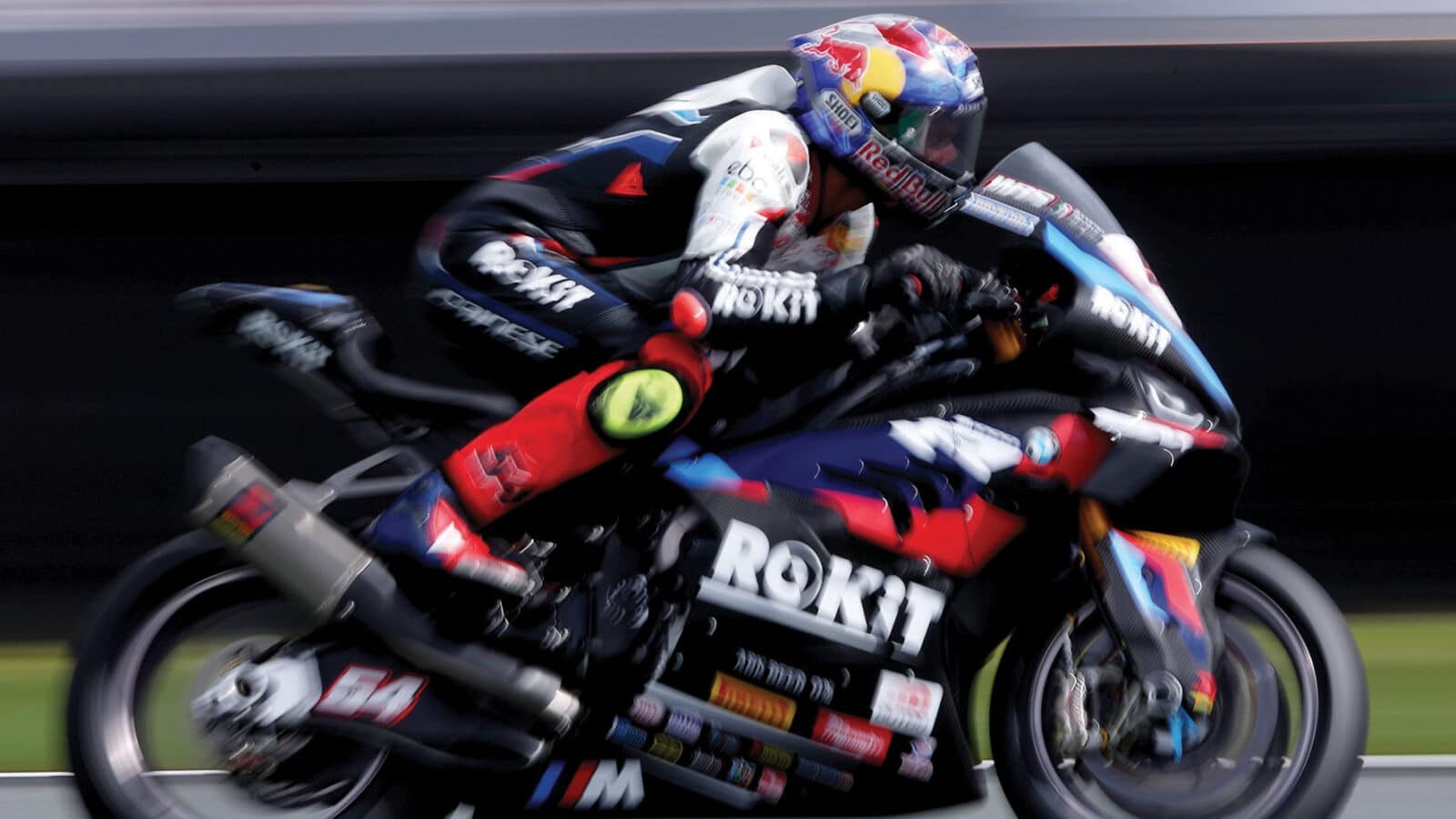Is BMW about to enter MotoGP?
After its World Superbike success, can we look forward to BMW having a crack at MotoGP?

Turkish sensation Toprak Razgatlioglu gave BMW Motorrad its first WSBK riders’ title
Getty Images
BMW has never tried to win the MotoGP world championship. The German manufacturer made a vague attempt in the 1950s, with a 500cc boxer-twin four-stroke, which took second place in the 1956 championship, behind MV Agusta’s John Surtees, but that was it.
The 1950s Rennsport 500 was a production racer, built around the latest iteration of the boxer-twin engine that had kick-started the BMW brand in the 1920s. The low-budget machine was sold to privateer riders and was a slim shadow of BMW’s fire-breathing supercharged boxer that had dominated grand prix racing and record-breaking in the late 1930s.
Georg Meier rode the blown boxer to the 1938 500cc European championship and most likely would’ve retained the title in 1939 if he hadn’t suffered back injuries in a high-speed crash. Every cloud has a silver lining, however. Meier (nicknamed ‘Der Gusseiserne’ – ‘Iron Man’) was declared unfit for frontline duties and spent much of World War II chauffeuring Wilhelm Canaris, the Nazi intelligence chief who was executed for involvement in a Hitler assassination plot.
In 1952 the FIM readmitted Germany to international events, but BMW Motorrad lost interest in MotoGP after the Rennsport. In subsequent decades its road-bike catalogue reflected that mindset: sensible touring motorcycles and all-rounders. During this time BMW entered only one major racing competition, the Paris-Dakar. Between them, riders Hubert Auriol and Gaston Rahier won the event four times in the ’80s, using even later iterations of the boxer-twin engine that came from the pen of Max Friz, the company’s first star engineer. Boxer twins still power BMW’s best-selling road bikes.
Friz started his career working for Daimler, where he contributed to the famed 1914 4½-litre Mercedes racing engine. Two years later he quit the company, after falling out with Gottlieb Daimler’s son Paul, and moved to Munich where he joined aircraft-engine maker Rapp Motorenwerke.
Friz designed his first engine for Rapp, the water-cooled in-line six 111a, with a carburettor that adjusted fuel/air mixture according to altitude. In the final months of World War I, 111a-equipped Fokker D VIIs wreaked havoc among Allied fighters because they could climb higher, faster.
In 1917 Rapp was renamed Bayerische Motoren Werke, a brave new venture that was forced to shut its doors just months later as left-wing and right-wing forces clashed in the German Revolution that raged for months after the 1918 armistice. When BMW workers finally returned to work the Treaty of Versailles effectively banned Germany from manufacturing aircraft, so BMW did whatever it could to survive – mostly making brake systems for the Bavarian state railway. Friz, however, kept drawing engines. In 1920 BMW put his Bayern-Kleinmotor into production, a 494cc boxer-twin stationery engine designed primarily for agricultural and industrial applications.
“BMW realised it must change. Work began on two new machines”
Friz was so good at what he did that several motorcycle manufacturers bought batches of his engines to power their bikes. BMW saw its future and put Friz to work designing the first BMW road vehicle, using his Bayern-Kleinmotor. The game-changing R32 was launched in 1923. It was a giant leap for motorcycling – perfectly balanced boxer engine, unit gearbox, car-type clutch, wet sump lubrication, shaft drive – and a warning shot to Britain’s huge motorcycle industry.
The following year BMW established its first race department and won the 500cc German Road Championship. Over the next decade and a half its motorcycles were beating allcomers at the Isle of Man TT and establishing world records on autobahns.
By the 1980s, however, BMW had become an old man’s brand, while the global motorcycle market was increasingly focused on high-performance machinery. After 2000, BMW realised it must change. Work began on two new machines intended to align BMW’s image with the new reality: a MotoGP bike and a 1000cc superbike for WSBK.
The MotoGP project was subcontracted to Mauro Forghieri’s Oral Engineering. Its 800cc triple (MotoGP ran 800cc engines from 2007-11) was basically three cylinders off BMW’s 2.4-litre V8 F1 engine. A prototype was track-tested but once again BMW lost interest.
Meanwhile BMW entered WSBK with its all-new S 1000 RR, but, incredibly, didn’t win the title until this year, with Turkish ace Toprak Razgatlioglu. The significance of BMW’s WSBK success is that it might encourage the company to re-enter MotoGP.
When Markus Flasch was appointed CEO of BMW Motorrad last winter he announced he is contemplating a move into MotoGP – but not until the company had conquered WSBK.
MotoGP undergoes a major rules rewrite in 2027, when engine size will be reduced, downforce aerodynamics trimmed and hydraulic ride-height adjusters will be banned. “When everyone starts from scratch, that’s the time to get in,” said Flasch.
MotoGP and its fans now await Flasch’s next pronouncement with bated breath.

